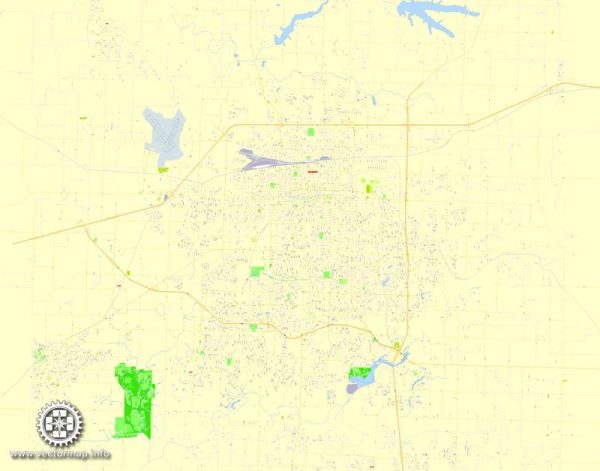Springfield, Missouri, has a rich history of urban development that spans several centuries. Here’s an overview of key periods and developments in the city’s urban history:
- Early Settlement and Incorporation (1820s-1830s): Springfield was first settled in the 1820s by pioneers attracted to the fertile land and abundant water supply. The town was officially incorporated in 1838. Its location along the Old Wire Road, a major westward route, contributed to its early growth.
- Civil War and Reconstruction (1860s): During the Civil War, Springfield played a significant role as a strategic outpost for both Union and Confederate forces. The city witnessed the Battle of Wilson’s Creek in 1861, one of the earliest large-scale battles of the conflict. After the war, Springfield underwent a period of reconstruction and recovery.
- Late 19th Century Expansion (1870s-1890s): The late 19th century saw significant expansion in Springfield. The arrival of the railroad in the 1870s facilitated trade and transportation, contributing to the city’s economic growth. The business district began to take shape, and Springfield evolved into a regional commercial and industrial hub.
- Early 20th Century Growth (1900s-1920s): The early 20th century brought continued growth, and the city experienced a building boom. Infrastructure improvements, such as paved streets and streetcar lines, enhanced mobility. The residential neighborhoods expanded, and landmarks like the Gillioz Theatre were constructed during this period.
- Great Depression and World War II (1930s-1940s): Like many other cities, Springfield faced economic challenges during the Great Depression. However, the city rebounded during World War II, experiencing economic revitalization due to its role in supporting the war effort. The post-war period saw returning veterans contributing to population growth and increased demand for housing.
- Mid-20th Century Suburbanization (1950s-1970s): The mid-20th century witnessed suburbanization trends, with residents moving to outlying areas and the development of suburban neighborhoods. The construction of highways, including the completion of Interstate 44, further facilitated suburban growth.
- Late 20th Century Redevelopment (1980s-1990s): Downtown Springfield underwent revitalization efforts in the late 20th century. Historic preservation projects, the establishment of entertainment venues, and the redevelopment of the Jordan Valley Park contributed to the city’s urban renewal.
- Contemporary Urban Development (2000s-Present): In recent decades, Springfield has focused on sustainable urban development, downtown revitalization, and community engagement. The city has invested in infrastructure, cultural amenities, and green spaces to enhance the quality of life for residents and attract businesses.
Throughout its history, Springfield’s urban development has been shaped by economic factors, transportation advancements, and the evolving needs of its residents. Today, the city continues to balance growth and preservation, maintaining a blend of historical charm and modern amenities.


 Author: Kirill Shrayber, Ph.D.
Author: Kirill Shrayber, Ph.D.